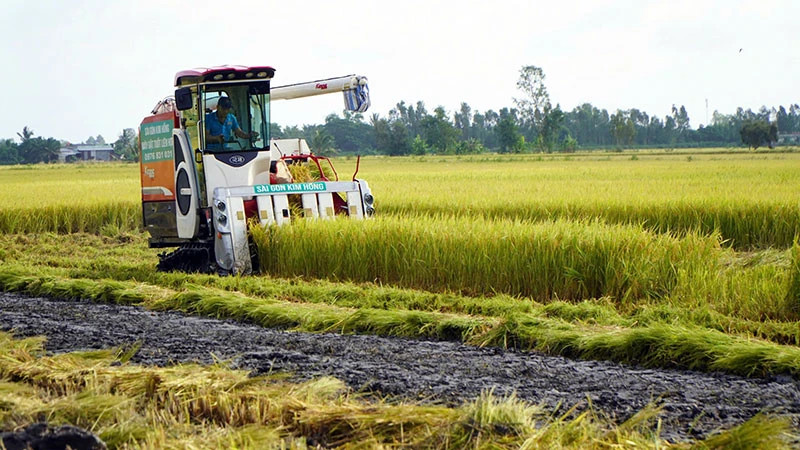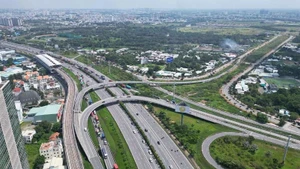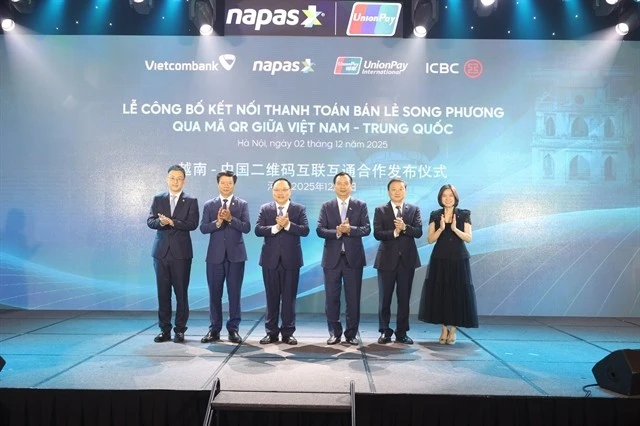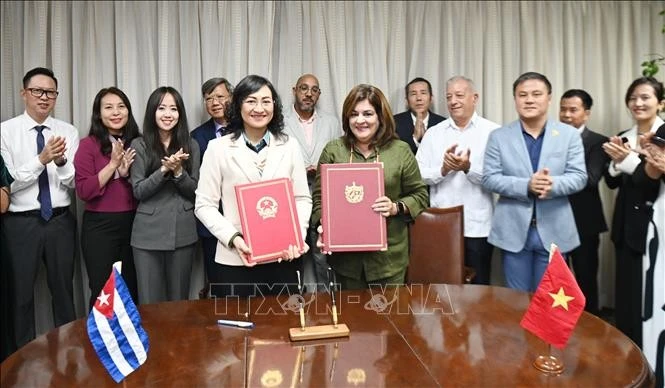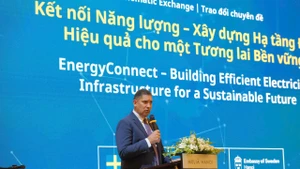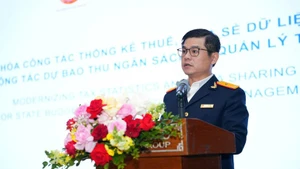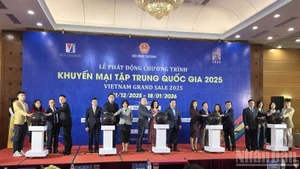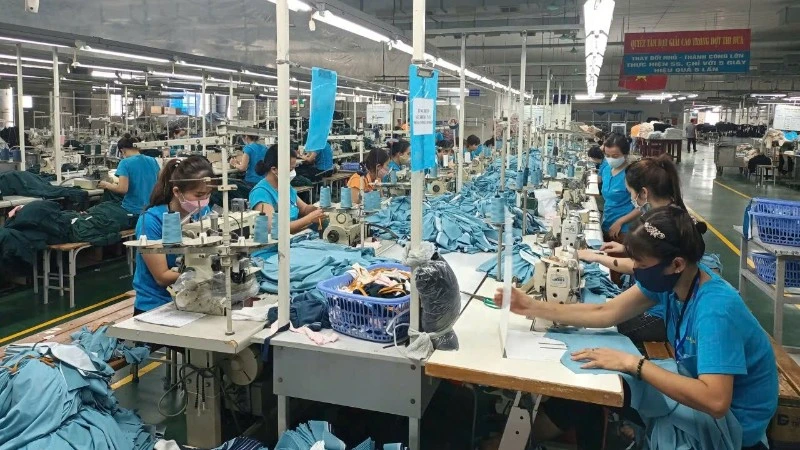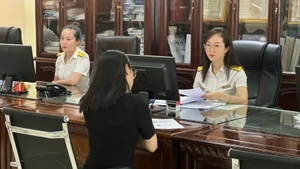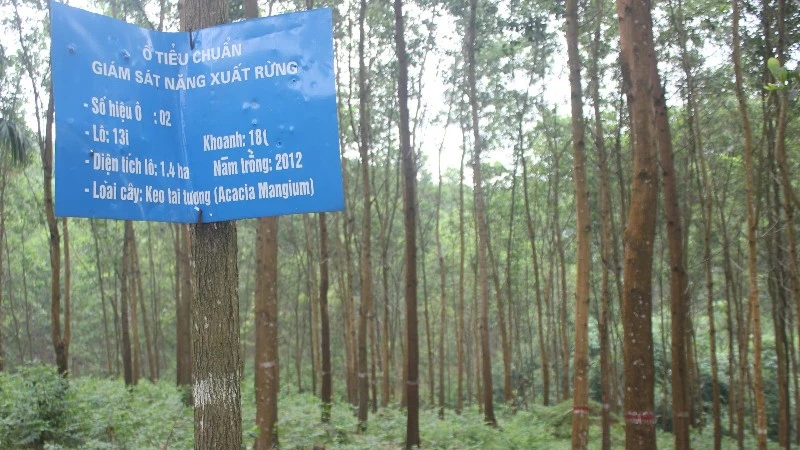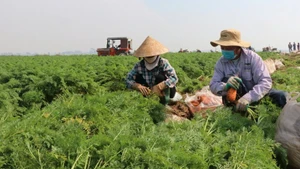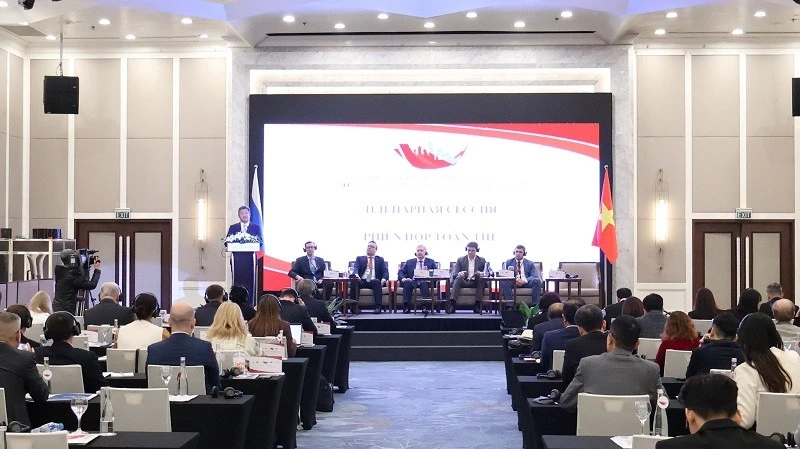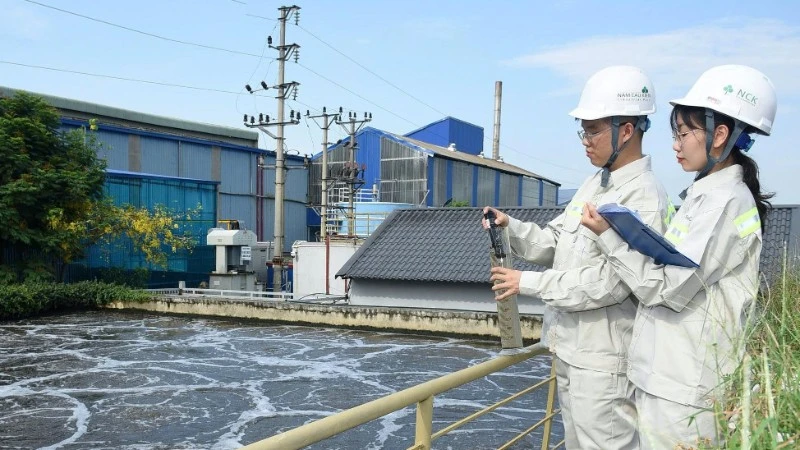Dong Thap and Long An are two provinces in the Dong Thap Muoi region that have been actively participating in the project, recording many positive initial results.
In reality, the government and farmers are reorganising the production system according to the value chain, applying sustainable farming processes to increase the value of rice, improve the lives of rice growers, protect the environment, and adapt to climate change.
Good news
After more than three months of sowing, nearly 50 hectares of rice piloting the implementation of the "Sustainable development of one million hectares of high-quality, low-emission rice cultivation associated with green growth in the Mekong Delta by 2030" project (Project) at Thang Loi Agricultural Service Cooperative, Lang Bien Commune, Thap Muoi District, Dong Thap Province, have been harvested.
Tran Tan Dang, one of more than 20 farmers participating in the pilot project in the 2024 autumn-winter crop, said that he has 2 hectares participating in the Project. Upon harvest, the yield reached more than 7 tonnes per hectare, about 500 kg per hectare higher than traditional rice production. The rice quality met the standards set by the project, and the profit was about 4.3 million VND per hectare higher than the control rice area.
Many other farmers affirmed that they will continue to participate in the Project in the next crop. People believe that not burning straw, reducing the amount of fertiliser, reducing the number of times spraying pesticides, and reducing the amount of seeds sown will reduce production costs, thus increasing the profit.
Dong Thap is one of five provinces and cities in the Mekong Delta region selected by the Ministry of Agriculture and Rural Development to pilot the Project. Thang Loi Agricultural Service Cooperative has pioneered the implementation of a model with nearly 50 hectares. The pilot project will be implemented from the autumn-winter crop of 2024 and will last for three consecutive crops.
Farmers participating in the model must keep a production diary, fully participate in training sessions, comply with the guidance process and especially not burn straw in the fields. Farmers are trained in rice cultivation techniques; every week, technical staff visit the fields, promptly propose measures to treat pests and diseases, support policies.
Tran Thanh Tam, Head of the Department of Cultivation and Plant Protection of Dong Thap province, said that the initial results showed that the area participating in the Project reduced production costs by more than 1.6 million VND per hectare, and the profit was nearly 4.3 million VND per hectare higher than the control rice area. Regarding greenhouse gas emissions, CO2 per hectare was reduced by 4.92 tonnes.
In Long An, the province determined that in order to successfully implement the Project, farmers must participate in cooperatives; 100% of the high-quality, low-emission rice area must have links between enterprises and cooperative groups and cooperatives in production and product consumption.
According to Nguyen Thi Dieu Ngan, Director of Vinh Thuan Agricultural Cooperative in Vinh Hung District, Long An Province, the greenhouse gas emission standards of the Project have been implemented by the cooperative through three rice crops and are continuing to be expanded to many members and farmers associated with the unit.
Nguyen Thi Dieu Ngan shared that growing clean rice, meeting European standards, brings in profits higher than traditional rice production by more than four million VND per hectare. The cooperative contracts to consume and manage product quality with enterprises.
Farmers are responsible for sowing seeds, killing snails, killing weeds, fertilising, and spraying biological plant protection products is periodically carried out by enterprises. With this method, farmers are very excited, and it is spreading to many other specialised rice growing areas in the locality.
With 83 members and linking with outside farmers, each crop, Vinh Thuan Agricultural Cooperative supplies businesses with about 1,000 tonnes of clean rice that meets export standards to Europe. The cooperative is continuing to negotiate prices to sign more contracts with businesses to expand production areas.
Replicating the model
Dinh Quang Hieu, representative of the Institute of Agricultural Environment (Ministry of Agriculture and Rural Development), said that the Institute has monitored and calculated greenhouse gas emissions for nearly 50 hectares of rice of Thap Muoi farmers participating in the pilot implementation of the Project.
Accordingly, in the 2024 autumn-winter rice crop, greenhouse gas emissions reduced by an average of 4.92 tonnes of CO2 per hectare, equivalent to a reduction of 43.4% compared to traditional farming methods. This emission reduction rate exceeded the initial proposal (more than 10%).
Nguyen Van Vu Minh, Director of the Department of Agriculture and Rural Development of Dong Thap Province, said that based on the results of the recent autumn-winter rice crop, the province will have policies to encourage and support farmers to overcome limitations, improve cultivation processes, and increasingly meet the criteria of the project in the 2024-2025 winter-spring rice crop.
The agricultural sector will also use practical results to introduce specific methods to farmers to ensure productivity, quality, reduce cultivation costs, increase profits, and contribute to reducing greenhouse gas emissions.
In the 2024-2025 winter-spring rice crop, Dong Thap will replicate in the remaining eight districts of the province with 11 models, with a total area of more than 1,300 hectares, implemented continuously for three crops. The goal is that by 2025, Dong Thap Province will have about 50,000 hectares of rice participating in the Project and by 2030, it will increase to about 161,000 hectares of high-quality, low-emission rice.
According to the Department of Agriculture and Rural Development of Long An Province, by the end of 2025, the whole province will have 60,000 hectares of high-quality rice participating in the Project and by 2030, it will be 120,000 hectares. To soon realise the goal, nine models in the Project will be implemented in localities of the Dong Thap Muoi region of Long An province in the winter-spring crop of 2024-2025, with a total area of over 150 hectares.
In addition, a Japanese enterprise will implement two pilot models at the Hoa Phu Agricultural Research and Service Centre (Chau Thanh District) and a farmer household in Vinh Tri Commune (Vinh Hung District), with each model covering 0.5 hectares. These pilot models are to determine the amount of greenhouse gas emissions from rice cultivation and the reduction of greenhouse gas emissions when applying the alternate flooding and drying method.
Thereby, the enterprise provides in-depth knowledge and skills on sustainable agriculture, carbon credits and is responsible for connecting funding sources from the Joint Crediting Mechanism (JCM), or voluntary carbon credits to support farmers in promoting green transformation, ensuring financial resources for implementing projects and measures to reduce greenhouse gas emissions.
Nguyen Minh Lam, Vice Chairman of the Long An Provincial People's Committee, said that, based on the program for developing high-tech agriculture associated with restructuring the agricultural sector towards improving quality and building product value chains that have been built over the past three years, Long An Province is determined to contribute to the implementation of the "Sustainable development of one million hectares of high-quality and low-emission rice cultivation associated with green growth in the Mekong Delta by 2030" project according to the set plan.
The province is paying more attention to reorganising production, consolidating and improving the quality and efficiency of cooperatives and cooperatives, and establishing new cooperatives and enterprises applying high technology in rice production.
